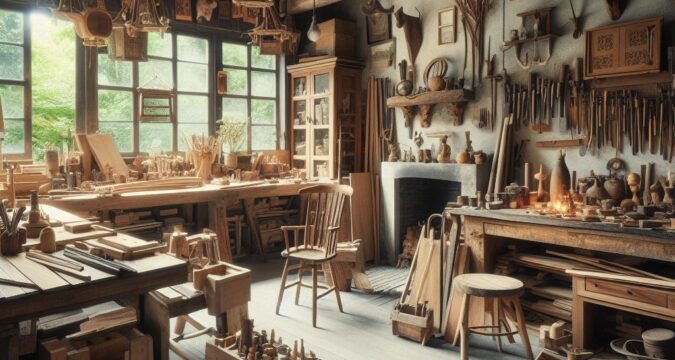
Welcome to the world of woodworking, where creativity and craftsmanship come together to create beautiful and functional pieces. Whether you’re a seasoned pro or just starting out, having a well-equipped and organized workshop is crucial for successful woodworking projects. In this comprehensive guide, we’ll take you through the essential elements, tools, materials, and safety precautions you need to set up and maintain a functional woodworker’s workshop.
Key Takeaway Table
| Element | Importance | Considerations |
|---|---|---|
| Workbench | Foundation of your workshop | Choose the right size, height, and features for your needs. |
| Storage Solutions | Keeps your tools and materials organized | Utilize cabinets, shelves, and drawers efficiently. |
| Lighting | Proper visibility for intricate work | Install multiple light sources for bright, even illumination. |
| Ventilation | Removes harmful dust and fumes | Ensure proper ventilation to maintain a safe environment. |
| Safety Equipment | Protect yourself from hazards | Wear safety glasses, dust masks, and hearing protection. |
Essential Elements of a Woodworker’s Workshop
1. Workbenches: The Foundation of Your Workshop
Your workbench is the heart of your workshop, providing a sturdy and stable surface for your projects. When choosing a workbench, consider the following factors:
- Size and Height: Choose a workbench that is large enough to accommodate your projects comfortably. The height should be adjustable to match your working posture, preventing strain and discomfort.
- Durability and Material: Opt for a sturdy workbench made from solid materials like hardwood, metal, or a combination of both. A durable workbench will withstand the rigors of woodworking and last for years.
- Features: Look for features like built-in storage, adjustable vises, and pegboards to enhance your workbench’s functionality and organization.
2. Storage Solutions: Keeping Your Workshop Organized
An organized workshop is a productive workshop. Implement effective storage solutions to keep your tools, materials, and finished projects neatly stored and easily accessible.
- Cabinets and Shelves: Install cabinets and shelves to store your tools, hardware, and supplies. Label each cabinet and shelf clearly for easy identification and retrieval.
- Drawers: Utilize drawers for smaller items like nails, screws, and drill bits. Drawer organizers can help you further divide and organize your supplies.
- Pegboards: Pegboards are a great way to store tools and keep them within reach. Hang your frequently used tools on the pegboard for quick and easy access.
[]
3. Lighting: Illuminating Your Workspace for Precision
Proper lighting is essential for accurate and safe woodworking. Install multiple light sources to ensure bright and even illumination throughout your workshop.
- Overhead Lighting: Install overhead lights to provide general illumination for the entire workshop. Choose fixtures that emit bright, diffused light without creating shadows.
- Task Lighting: Add task lighting to specific work areas where you need more concentrated light. Desk lamps with adjustable arms or clip-on lights are great options for task lighting.
- Natural Light: If possible, position your workbench near a window to take advantage of natural light. Natural light is ideal for detailed work and color matching.
[Workshop lighting guide link]
4. Ventilation: Ensuring a Safe and Healthy Environment
Woodworking can generate dust, fumes, and other airborne particles that can be harmful to your health. Proper ventilation is crucial to remove these contaminants and maintain a safe working environment.
- Exhaust Fans: Install exhaust fans near dust-generating areas, such as your saw station or sander. Exhaust fans help remove sawdust and fumes from the workshop.
- Air Purifiers: Air purifiers can help remove smaller particles that exhaust fans may miss. Consider using air purifiers in addition to exhaust fans for better air quality.
- Open Windows and Doors: When weather permits, open windows and doors to increase air circulation and ventilation.
[Workshop ventilation guide link]
5. Safety Equipment: Protecting Yourself from Hazards
Safety should always be your top priority in the workshop. Wear appropriate safety gear to protect yourself from hazards such as dust, noise, and sharp tools.
- Safety Glasses: Safety glasses are essential for protecting your eyes from flying wood chips and sawdust. Choose safety glasses that meet ANSI Z87.1 standards.
- Dust Masks: Dust masks are necessary to protect your lungs from inhaling harmful dust particles. Choose a dust mask that is NIOSH-approved for woodworking.
- Hearing Protection: Woodworking tools can generate loud noise. Wear hearing protection, such as earplugs or ear muffs, to prevent hearing damage.
- Gloves: Gloves can protect your hands from splinters, sharp
External Resources
Below are three external links that could be relevant to this article:

